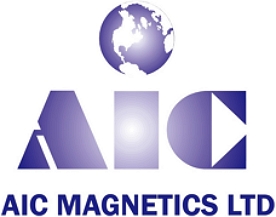Thanks to their exceptional magnetic properties and versatile applications, Sintered Neodymium Iron Boron (NdFeB) permanent magnets have become a cornerstone material in various industrial sectors. However, the degradation of NdFeB magnetic performance at elevated temperatures remains a key concern for engineers. This article delves into the definition and influencing factors of temperature resistance in sintered NdFeB magnets, offering expert recommendations to aid in engineering design and applications.
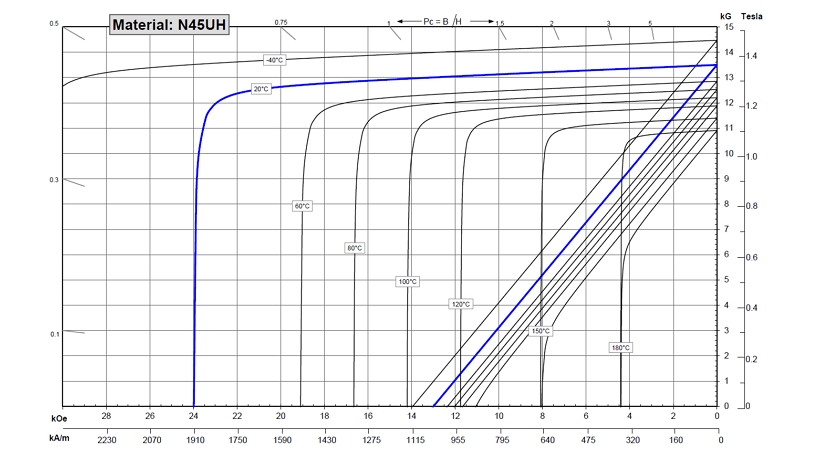
Production Process of Sintered NdFeB Magnets
The production of sintered NdFeB magnets involves a meticulously controlled process to ensure superior magnetic and temperature-resistant properties:
• Raw Material Melting: Neodymium (Nd), Iron (Fe), Boron (B), and other raw materials are melted in precise proportions to form alloy strips via melt-spinning.
• Hydrogenation and Milling: The alloy ribbons undergo hydrogen decrepitation (HD) and jet milling processes to produce micrometer-sized magnetic powders.
• Pressing & Alignment: The magnetic powder is compacted in a magnetic field to achieve oriented grain alignment, maximizing magnetic performance.
• Sintering & Annealing: The compacted magnets are sintered at high temperatures to achieve densification, followed by tempering heat treatments to optimize magnetic characteristics.
• Machining and Inspection: The sintered magnets undergo precision machining, surface coating based on application needs, magnetization, and rigorous performance testing to ensure product quality.
Precise control throughout this process is crucial for achieving high coercivity and temperature resistance in the final material.

Defining Temperature Resistance of Sintered NdFeB Magnets
The temperature resistance of sintered NdFeB magnets refers to their capacity to maintain magnetic properties when operating in high-temperature environments. This must be understood from both material and product perspectives:
• Material Temperature Resistance: This refers to the theoretical reference value of a standard sample under specific conditions, typically provided in material grade specifications.
• Product Temperature Resistance: Influenced by factors such as magnet shape, magnetic circuit design, and operating environment, product temperature resistance requires validation through actual testing.
The magnetic properties of sintered NdFeB magnets decrease as temperature rises. After exposure to high-temperature operation, even upon returning to room temperature, the magnet's magnetic performance may experience a decline, known as irreversible demagnetization. A maximum working temperature is established in engineering design to prevent significant irreversible flux loss (typically defined as <5%).
Similarly, the maximum working temperature needs to be interpreted on both material and product levels:
• Material Maximum Working Temperature:
Defined by the Chinese National Standard <GB/T 13560-2017 Sintered NdFeB Magnets Material>, the material maximum working temperature is the highest holding temperature at which a magnetically saturated, cylindrical permanent magnet sample with a length-to-diameter ratio (L/D) of 0.7, in a thermally demagnetized state and open circuit condition, experiences less than 5% irreversible open circuit flux loss after being heated from room temperature to a constant temperature, held for 2 hours, and then cooled back to room temperature. For instance, the maximum working temperature for sintered NdFeB material grade N35 is 80°C (176°F).
• Magnetic Product Maximum Working Temperature:
Due to the impact of product shape, magnetic circuit design, and operating environment, even magnets from the same material grade can exhibit significant differences in demagnetization behavior at high temperatures. Therefore, establishing a uniform standard is challenging. Typically, the maximum working temperature for a magnetic product is determined through experimental verification based on the critical value of magnetic performance degradation when the product operates at a specific temperature or after operating at that temperature and cooling to room temperature.
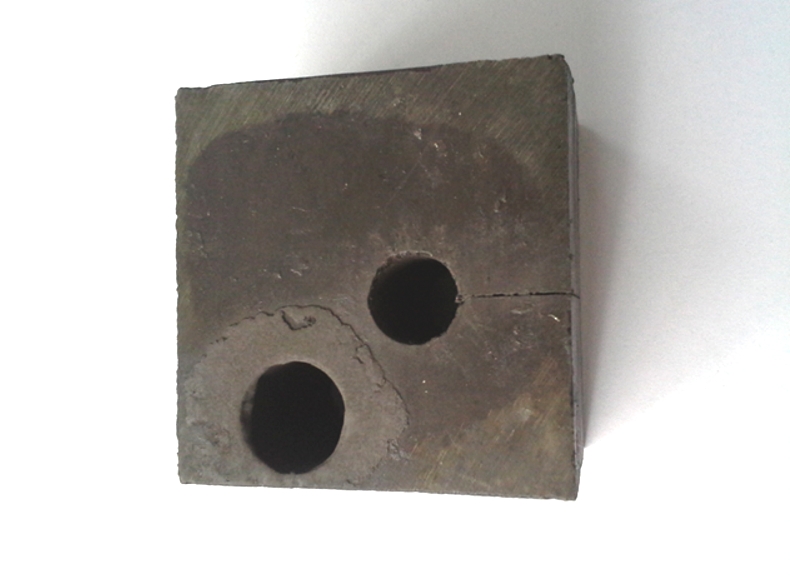
Sintered Magnet Blank
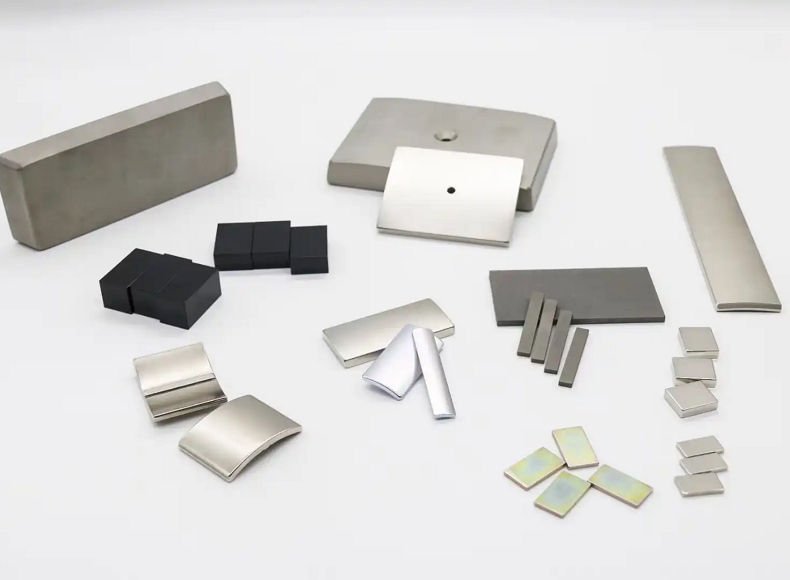
Sintered NdFeB Magnet Products
Factors Influencing Temperature Resistance
Several factors significantly influence the temperature resistance of sintered NdFeB magnets:
• Material Grade: Different grades of NdFeB magnets exhibit varying temperature resistance levels. High-coercivity grades (M, H, SH, UH, EH, VH, and AH series) demonstrate superior temperature resistance due to the incorporation of rare earth elements like Dysprosium (Dy) and Terbium (Tb) in their composition, which enhances coercivity.
• Magnet Shape: The shape of the magnet, particularly its dimensions along the magnetization direction, plays a crucial role. Thicker and longer magnets along the magnetization direction exhibit better temperature resistance than thinner and shorter magnets. This is attributed to the higher shear angle of the demagnetization curve and intrinsic coercivity in thicker and longer magnets, which effectively resist demagnetization risks at elevated temperatures.
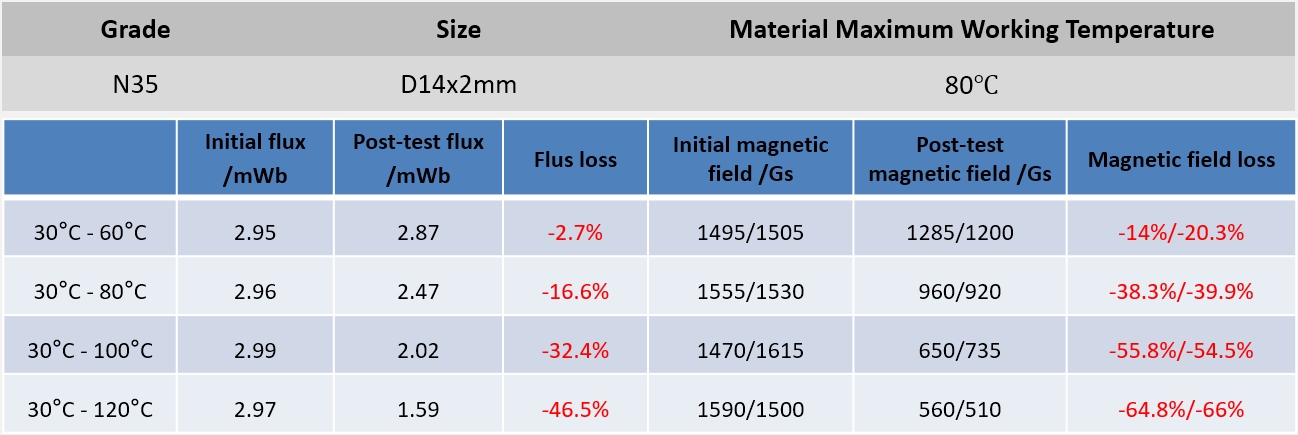

• Magnetic Circuit Design: The configuration of the magnetic circuit, whether open or closed, significantly impacts temperature resistance. Closed magnetic circuits provide a more stable magnetic field environment for the magnet, effectively suppressing high-temperature demagnetization effects. Therefore, designing magnetic circuits to operate in semi-closed or closed configurations is advisable to maximize temperature resistance.
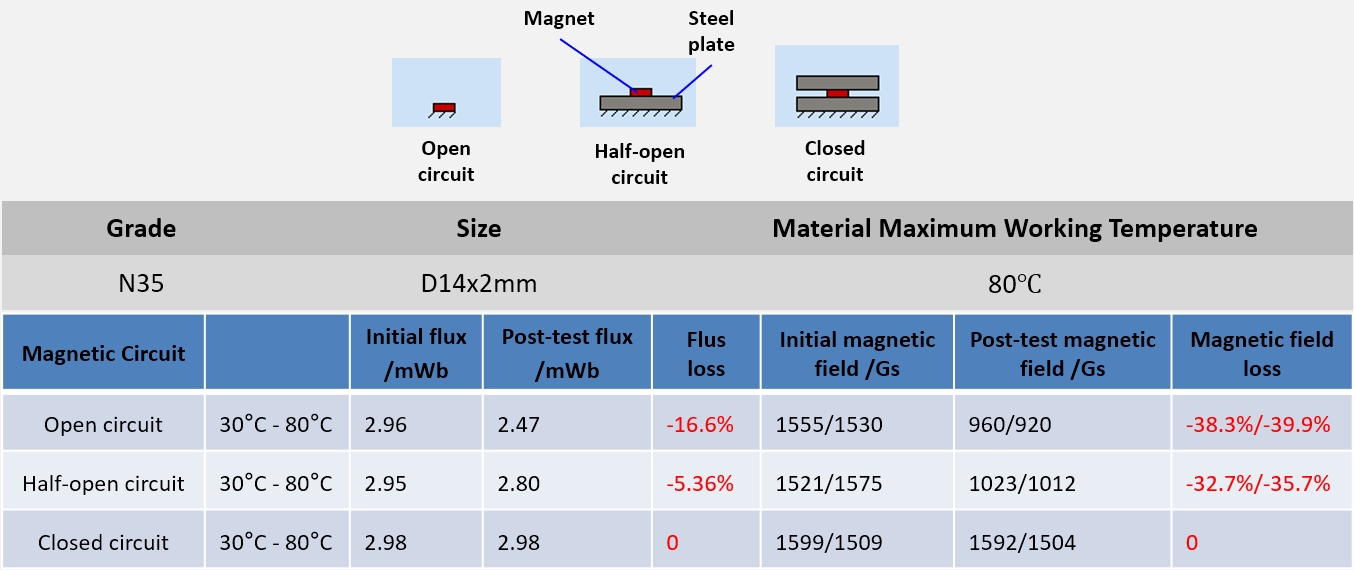
Design Recommendations
To ensure optimal performance of sintered NdFeB magnets in high-temperature applications, consider these design recommendations:
• Select High-Temperature Grades:
Opt for high-coercivity NdFeB grades such as the SH, UH, EH, VH, and AH series. These grades are specifically engineered for high-temperature environments and offer more reliable temperature resistance.
• Optimize Magnet Shape:
Design magnets to be as long and thick as structurally feasible, increasing dimensions along the magnetization direction to enhance intrinsic coercivity and temperature stability.
• Optimize Magnetic Circuit Design:
Design the magnetic circuit to ensure the magnet operates in a semi-closed or closed configuration. A well-designed magnetic circuit significantly improves the magnet's resistance to demagnetization, thereby enhancing overall temperature performance.
AIC Magnetics' Expertise in High-Temperature NdFeB Magnets
At AIC Magnetics, we recognize the critical importance of temperature resistance for permanent magnet applications. We offer a comprehensive portfolio of sintered NdFeB magnets, including high-temperature grades engineered explicitly for reliable operation in demanding thermal environments. Our engineering team possesses extensive expertise in magnetic materials science and magnetic circuit design, and we are dedicated to providing you with comprehensive technical support:
• Professional Material Selection Guidance: Our expert team offers precise recommendations for the optimal NdFeB material grade based on your specific temperature requirements and application scenarios, ensuring a perfect match between material performance and application needs.
• Customized Magnet Design Solutions: We provide tailored magnet shape and dimension designs based on your unique requirements, optimizing magnet structural design to enhance temperature stability significantly.
• In-depth Magnetic Circuit Optimization Support: We offer professional magnetic circuit design optimization services to help you create circuit configurations that maximize magnet performance and temperature resistance, fully leveraging your magnets' potential.
• Comprehensive Testing and Validation Services: Equipped with advanced testing facilities and a dedicated testing team, we provide thorough temperature performance testing and validation services for your magnetic products, ensuring reliability and stability in real-world application environments.
The temperature resistance of sintered NdFeB magnets is influenced by a combination of factors, including material properties, magnet shape, and magnetic circuit design. Achieving optimal performance requires scientific design and rigorous testing. If you have demanding requirements for magnetic performance stability in high-temperature environments, we encourage you to contact us for expert technical support and customized product solutions.
Post time: Feb-19-2025
